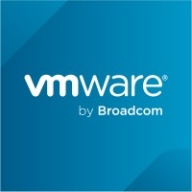

Find out in this report how the two Cloud Data Warehouse solutions compare in terms of features, pricing, service and support, easy of deployment, and ROI.
For a lot of different tasks, including machine learning, it is a nice solution.
When it comes to big data processing, I prefer Databricks over other solutions.
As of now, we are raising issues and they are providing solutions without any problems.
Whenever we reach out, they respond promptly.
I rate the technical support as fine because they have levels of technical support available, especially partners who get really good support from Databricks on new features.
The patches have sometimes caused issues leading to our jobs being paused for about six hours.
I would rate the scalability of this solution as very high, about nine out of ten.
Databricks is an easily scalable platform.
Most of our functions or jobs are queued due to that.
They release patches that sometimes break our code.
Databricks is definitely a very stable product and reliable.
Although it is too early to definitively state the platform's stability, we have not encountered any issues so far.
I have faced stability issues, mainly due to the storage my organization has, though I am not sure if it's specifically due to the tool.
We use MLflow for managing MLOps, however, further improvement would be beneficial, especially for large language models and related tools.
They're now coming up with their IBI dashboard, and I think they're on the right track to improve that even further.
It would be beneficial to have utilities where code snippets are readily available.
It is not a cheap solution.
Databricks' capability to process data in parallel enhances data processing speed.
The Unity Catalog is for data governance, and the Delta Lake is to build the lakehouse.
The platform allows us to leverage cloud advantages effectively, enhancing our AI and ML projects.
The product is not complex; I do not have to create stored procedures, functions, or views.


| Company Size | Count |
|---|---|
| Small Business | 25 |
| Midsize Enterprise | 12 |
| Large Enterprise | 56 |
| Company Size | Count |
|---|---|
| Small Business | 30 |
| Midsize Enterprise | 10 |
| Large Enterprise | 48 |
Databricks offers a scalable, versatile platform that integrates seamlessly with Spark and multiple languages, supporting data engineering, machine learning, and analytics in a unified environment.
Databricks stands out for its scalability, ease of use, and powerful integration with Spark, multiple languages, and leading cloud services like Azure and AWS. It provides tools such as the Notebook for collaboration, Delta Lake for efficient data management, and Unity Catalog for data governance. While enhancing data engineering and machine learning workflows, it faces challenges in visualization and third-party integration, with pricing and user interface navigation being common concerns. Despite needing improvements in connectivity and documentation, it remains popular for tasks like real-time processing and data pipeline management.
What features make Databricks unique?In the tech industry, Databricks empowers teams to perform comprehensive data analytics, enabling them to conduct extensive ETL operations, run predictive modeling, and prepare data for SparkML. In retail, it supports real-time data processing and batch streaming, aiding in better decision-making. Enterprises across sectors leverage its capabilities for creating secure APIs and managing data lakes effectively.
VMware Tanzu is a robust platform tailored for data warehousing, complex analytics, BI applications, and predictive analytics. It excels in scalability, performance, and parallel processing, enhancing data handling efficiency. Users report significant productivity improvements and streamlined operations, making it ideal for comprehensive data solutions.
We monitor all Cloud Data Warehouse reviews to prevent fraudulent reviews and keep review quality high. We do not post reviews by company employees or direct competitors. We validate each review for authenticity via cross-reference with LinkedIn, and personal follow-up with the reviewer when necessary.